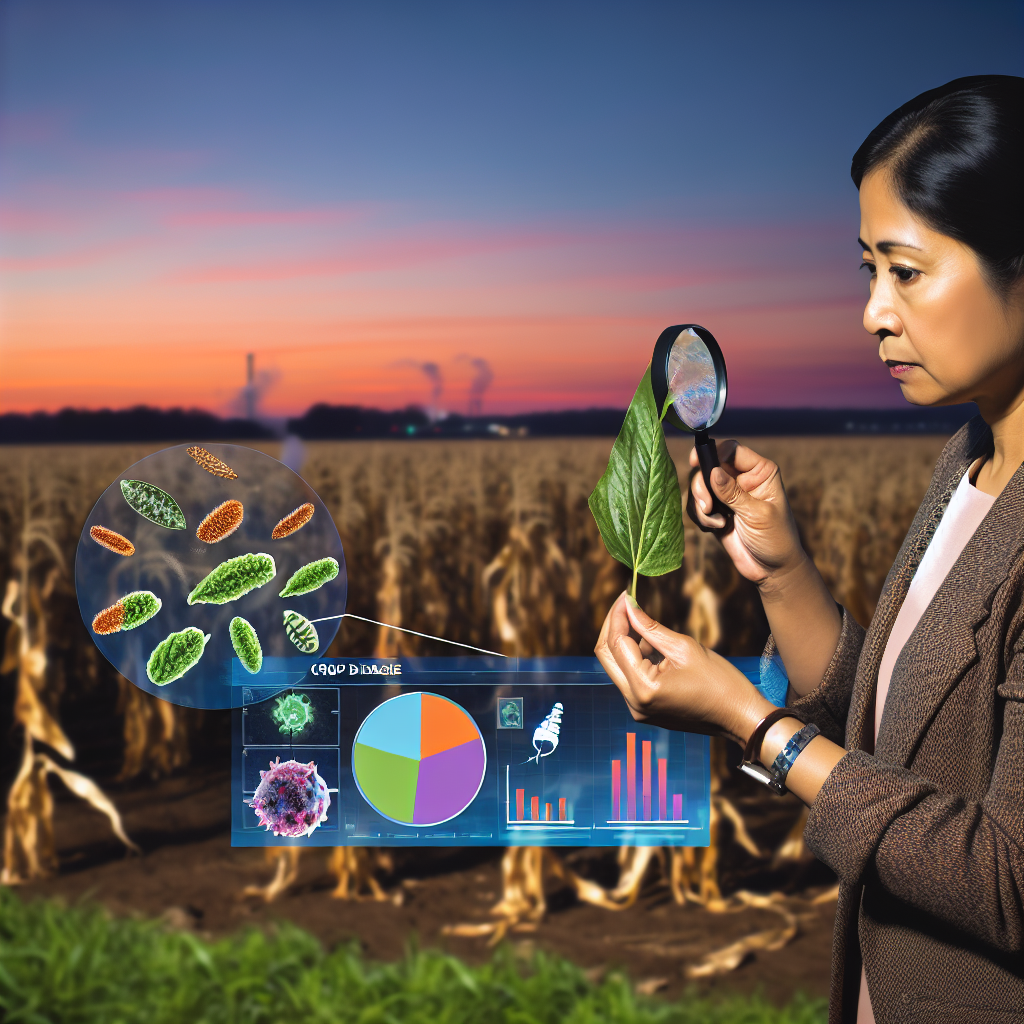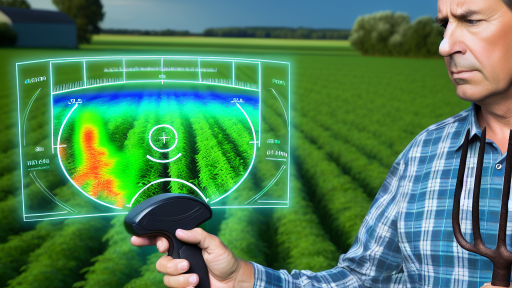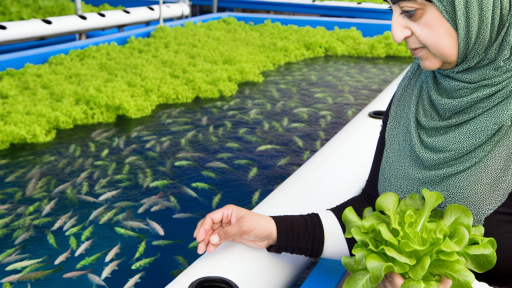Introduction to Crop Diseases and Their Impact on Agriculture
Crop diseases pose a significant threat to global agriculture.
They can reduce yields, quality, and profitability for farmers.
Additionally, these diseases compromise food security worldwide.
Farmers face increasing challenges from various pathogens.
Common pathogens include fungi, bacteria, and viruses.
Furthermore, environmental conditions often exacerbate these threats.
For instance, humidity and temperature can influence disease spread.
As a result, understanding crop diseases is essential for farmers.
Effective management practices can mitigate their impact.
Farmers can adopt integrated pest management strategies.
These strategies emphasize prevention, monitoring, and control.
Moreover, technology plays a crucial role in early detection.
For example, predictive analytics enhance forecasting capabilities.
Consequently, early detection can lead to timely interventions.
Farmers and researchers continuously seek innovative solutions.
Transform Your Agribusiness
Unlock your farm's potential with expert advice tailored to your needs. Get actionable steps that drive real results.
Get StartedBy improving detection methods, they can safeguard crops effectively.
Ultimately, addressing crop diseases supports sustainable agriculture.
It ensures a stable food supply for future generations.
Importance of Early Detection in Crop Disease Management
Preventing Spread of Diseases
Early detection plays a vital role in managing crop diseases.
It allows farmers to identify issues before they escalate.
This proactive approach prevents the spread of harmful diseases.
Consequently, it protects surrounding crops and the ecosystem.
Minimizing Economic Losses
Crop diseases can lead to significant economic losses for farmers.
By detecting problems early, farmers can minimize these losses.
Immediate action helps maintain yield levels and quality.
Ultimately, it ensures better income stability for producers.
Enhancing Resource Management
Efficient resource management is essential for sustainable farming.
Early detection helps in the strategic use of pesticides and fertilizers.
This reduces unnecessary chemical applications, promoting sustainability.
By being more targeted, farmers can save costs and preserve resources.
Improving Crop Quality
Healthy crops produce better yields and higher quality products.
Through early disease detection, farmers can encourage optimal growth.
This leads to healthier plants and improved marketability.
Ultimately, high-quality products increase customer satisfaction and demand.
Facilitating Research and Development
Early detection contributes to ongoing agricultural research.
Identifying new diseases aids in developing resistant crop varieties.
This knowledge enhances agricultural practices and biosecurity measures.
Consequently, it leads to advancements in crop management technologies.
Overview of Traditional Detection Methods
Visual Inspection
Visual inspection remains a fundamental method for detecting crop diseases.
Showcase Your Farming Business
Publish your professional farming services profile on our blog for a one-time fee of $200 and reach a dedicated audience of farmers and agribusiness owners.
Publish Your ProfileFarmers routinely examine plants for visible symptoms.
Signs such as discoloration or wilting signal potential problems.
Despite its simplicity, this method demands keen observation skills.
Laboratory Testing
Laboratory testing provides a more precise diagnosis of crop diseases.
Samples undergo scientific analysis to identify pathogens.
This method includes techniques like serology and molecular assays.
Although accurate, these tests can be time-consuming and costly.
Field Surveys
Field surveys collect data on disease incidence and severity.
Researchers and agronomists regularly conduct these surveys.
The data gathered helps identify disease trends over time.
However, surveys may miss localized outbreaks.
Remote Sensing Technologies
Remote sensing technologies enhance traditional detection methods.
Drones and satellites capture images of crop health from above.
They assess factors like vegetation indices and temperature variations.
This technology allows for large-scale monitoring with less labor.
Integrated Pest Management (IPM)
Integrated Pest Management uses a holistic approach to disease control.
This method blends cultural, biological, and chemical practices.
Regular monitoring is essential for timely interventions.
IPM emphasizes sustainable practices to minimize environmental impact.
Uncover the Details: Starting Your Own Hydroponic Garden
Advancements in Technology for Crop Disease Forecasting
Remote Sensing Technologies
Remote sensing technologies play a crucial role in agricultural monitoring.
They allow farmers to assess crop health from a distance.
Satellite imagery provides valuable data on vegetation indices.
Farmers can identify potential disease outbreaks early with this information.
Drones further enhance these capabilities with high-resolution images.
Machine Learning and Artificial Intelligence
Machine learning algorithms analyze vast amounts of data rapidly.
These tools predict potential disease outbreaks effectively.
AI models can learn from historical data to improve accuracy.
Furthermore, they can adapt to new conditions and emerging diseases.
IoT and Sensor Technologies
The Internet of Things (IoT) has advanced crop monitoring significantly.
Smart sensors collect real-time data on soil moisture and temperature.
Farmers can make informed decisions based on accurate information.
This technology helps identify stress conditions before they escalate.
Moreover, it integrates seamlessly with farming equipment for efficiency.
Mobile Applications for Disease Detection
Mobile applications offer accessible tools for immediate disease identification.
Farmers can take pictures of plants to receive diagnostic feedback.
These apps utilize databases to recognize various plant diseases.
They provide recommendations for treatment based on data analysis.
Collaboration and Data Sharing Platforms
Collaboration in the agricultural sector facilitates knowledge sharing.
Data platforms connect farmers with researchers and agronomists.
Showcase Your Farming Business
Publish your professional farming services profile on our blog for a one-time fee of $200 and reach a dedicated audience of farmers and agribusiness owners.
Publish Your ProfileFarmers can access real-time data from other growers in their region.
This sharing of information leads to quicker response times.
Gene Editing and Biotechnology
Biotechnology offers innovative solutions for disease resistance.
Gene editing techniques create crops that withstand diseases better.
These advancements help secure food production against future threats.
Furthermore, they can reduce the need for chemical interventions.
Delve into the Subject: Utilizing Technology In Pest And Disease Forecasting
Remote Sensing Techniques for Early Detection
Introduction to Remote Sensing
Remote sensing involves acquiring data without direct contact with the object.
This technique utilizes electromagnetic radiation to capture information.
Farmers can detect pests and diseases early with remote sensing technologies.
Types of Remote Sensing Techniques
Several methods exist in the realm of remote sensing.
Satellite imagery is one of the most commonly used techniques.
Drones equipped with cameras also offer valuable insights.
Ground-based sensors provide additional detail and accuracy.
Satellite Imagery
Satellite imagery captures vast areas of land quickly.
This data helps farmers monitor crop health over large distances.
Vegetation indices derived from satellite images indicate plant vitality.
Drone Technology
Drones offer precise aerial assessments of crops.
They can fly low and capture high-resolution images.
Farmers can identify issues like wilting and discoloration rapidly.
Ground-Based Sensors
Ground-based sensors gather data from the field level.
These sensors monitor factors like soil moisture and temperature.
They help farmers make informed decisions regarding irrigation and treatment.
Benefits of Remote Sensing in Agriculture
Remote sensing provides numerous advantages for crop management.
It enhances the ability to diagnose problems accurately.
Farmers can respond quickly, minimizing crop damage.
This approach promotes sustainable practices and resource efficiency.
Challenges and Limitations
Despite its benefits, remote sensing faces several challenges.
Cost can be a significant barrier for small-scale farmers.
Data interpretation requires expertise, which may be lacking.
Moreover, environmental factors can affect the accuracy of readings.
Valuable Tool for Early Disease Detection
Remote sensing is a valuable tool for early disease detection.
It offers several techniques that farmers can leverage effectively.
With further advancements, remote sensing will continue to improve crop health monitoring.
Explore Further: Enhancing Soil Fertility with Cover Crops
Machine Learning Approaches in Disease Prediction
Overview of Machine Learning in Agriculture
Machine learning revolutionizes agriculture by improving crop disease prediction.
This technology uses data-driven methods to analyze patterns and trends.
Furthermore, it provides farmers with predictive insights that enhance decision-making.
Data Collection Techniques
Effective disease prediction relies on accurate data collection techniques.
Farmers can use sensors to gather real-time information on soil conditions.
Showcase Your Farming Business
Publish your professional farming services profile on our blog for a one-time fee of $200 and reach a dedicated audience of farmers and agribusiness owners.
Publish Your ProfileAdditionally, satellite imagery offers valuable data about crop health.
Moreover, historical data on climate and pest infestations proves useful.
Machine Learning Algorithms
Various machine learning algorithms support disease prediction.
- Random Forest algorithms analyze multiple variables simultaneously.
- Support Vector Machines excel in classifying distinct data groups.
- Neural networks model complex patterns in large datasets.
These algorithms can process vast amounts of data effectively.
They help identify early signs of crop diseases for timely interventions.
Model Training and Validation
Model training is essential for achieving accurate disease predictions.
Data must be split into training and validation sets to evaluate performance.
Cross-validation techniques ensure models generalize well on unseen data.
As a result, farmers can trust the predictive results for practical applications.
Case Studies and Applications
Several successful case studies illustrate the effectiveness of machine learning.
In India, researchers used machine learning to predict coffee leaf diseases.
This approach led to a 30% increase in crop yield over three seasons.
Additionally, a startup in the United States developed an app for tomato growers.
This app detects early signs of blight through image recognition technology.
Challenges and Future Directions
Despite its potential, machine learning faces challenges in agriculture.
Data quality and accessibility remain significant barriers for many farmers.
Furthermore, integrating machine learning with existing agricultural practices is complex.
Yet, the future holds promise as continuous advancements occur in technology.
Ultimately, improved accessibility will empower farmers around the globe.
Learn More: Organic Fertilizers: Boosting Crop Growth Naturally

Role of Weather Data in Forecasting Crop Diseases
Importance of Weather Data
Weather data significantly influences crop health and productivity.
Farmers rely on accurate forecasts to make informed decisions.
Moreover, weather conditions directly impact disease development.
For instance, temperature, humidity, and precipitation affect pathogen survival.
Key Weather Factors
Several weather factors are critical in forecasting crop diseases.
- Temperature plays a vital role in the growth of pathogens.
- Humidity provides an ideal environment for disease spread.
- Precipitation aids in the establishment of diseases.
Thus, monitoring these factors is essential for early detection.
Data Collection Methods
Farmers use various methods to collect weather data.
Traditional weather stations provide localized data for specific areas.
Remote sensing technologies offer broader insights into weather patterns.
Satellite imagery is particularly useful for large-scale monitoring.
Integration of Weather Data in Forecasting Tools
Advanced forecasting tools utilize weather data to predict diseases.
These tools analyze historical weather data alongside current conditions.
Machine learning algorithms enhance the accuracy of disease predictions.
This integrated approach enables timely intervention by farmers.
Case Studies
Real-world examples illustrate the effectiveness of weather data.
In Spain, farmers use weather forecasting systems to manage olive diseases.
In the U.S., corn disease outbreaks are minimized through accurate forecasts.
These case studies highlight the significant advantages of data utilization.
Integration of Genomic Data for Improved Disease Resistance
The Role of Genomics in Agriculture
Genomic data plays a crucial role in modern agriculture.
This data helps identify plant traits linked to disease resistance.
Showcase Your Farming Business
Publish your professional farming services profile on our blog for a one-time fee of $200 and reach a dedicated audience of farmers and agribusiness owners.
Publish Your ProfileFurthermore, researchers can use genomics to enhance breeding programs.
By leveraging genetic information, agronomists can select resistant varieties.
Current Advances in Genomic Technologies
Various genomic technologies are transforming crop disease management.
Next-generation sequencing allows for detailed genetic analyses.
Additionally, CRISPR technology enables targeted gene editing.
These advancements lead to faster development of resistant crops.
Application of Genomic Data in Disease Forecasting
Integrating genomic data with other agricultural technologies improves disease forecasting.
Machine learning algorithms analyze genetic and environmental factors.
This integration aids in predicting disease outbreaks more accurately.
As a result, farmers can implement preventive measures in advance.
Challenges in Genomic Integration
Despite its potential, integrating genomic data poses several challenges.
Data management and analysis require significant resources and expertise.
Moreover, ethical considerations around genetic modification must be addressed.
Finally, public acceptance remains a critical hurdle to overcome.
Future Directions in Genomic Research
The future of genomic research in agriculture looks promising.
Researchers aim to unravel complex genetic networks underlying disease resistance.
Advancements in biotechnology will enhance crop resilience significantly.
Ultimately, these efforts will contribute to sustainable agricultural practices.
Case Studies: Successful Implementation of Detection Methods
Introduction to Case Studies
This section highlights successful case studies in crop disease detection.
The focus is on innovative methods and technologies.
Each example demonstrates practical application and effectiveness.
Precision Agriculture in Vegetable Farming
In 2022, Green Fields Farm adopted drone technology.
They utilized infrared imaging to detect crop diseases.
This method allowed early detection of blight.
As a result, they reduced crop loss by 30%.
Farmers appreciated the time-saving benefits of this technology.
Machine Learning in Wheat Production
Harvest Tech, a leading agritech company, implemented machine learning.
They developed a predictive model for wheat diseases.
This model analyzed data from multiple environmental factors.
It accurately forecasted outbreaks before they occurred.
Consequently, farmers could take preventive measures.
Community-Based Monitoring Systems
In East Africa, local farmers initiated a community monitoring program.
They trained volunteers to identify visible symptoms of disease.
This grassroots approach improved awareness significantly.
Farmers reported higher yields due to early intervention.
Communities embraced technology by sharing data and solutions.
Satellite Imagery for Large-Scale Crop Monitoring
AgriSat Solutions utilized satellite imagery for monitoring vast fields.
Their system provided detailed insights into crop health.
Farmers received alerts about potential disease outbreaks.
With timely information, they minimized financial losses.
Showcase Your Farming Business
Publish your professional farming services profile on our blog for a one-time fee of $200 and reach a dedicated audience of farmers and agribusiness owners.
Publish Your ProfileThis method proved especially useful in remote areas.
Effective Detection Strategies in Agriculture
These case studies exemplify effective detection strategies.
Innovative methods lead to better crop management.
Collaboration among stakeholders fosters community resilience.
Farmers benefit from advanced technology integration.
Early detection methods significantly impact agricultural success.




